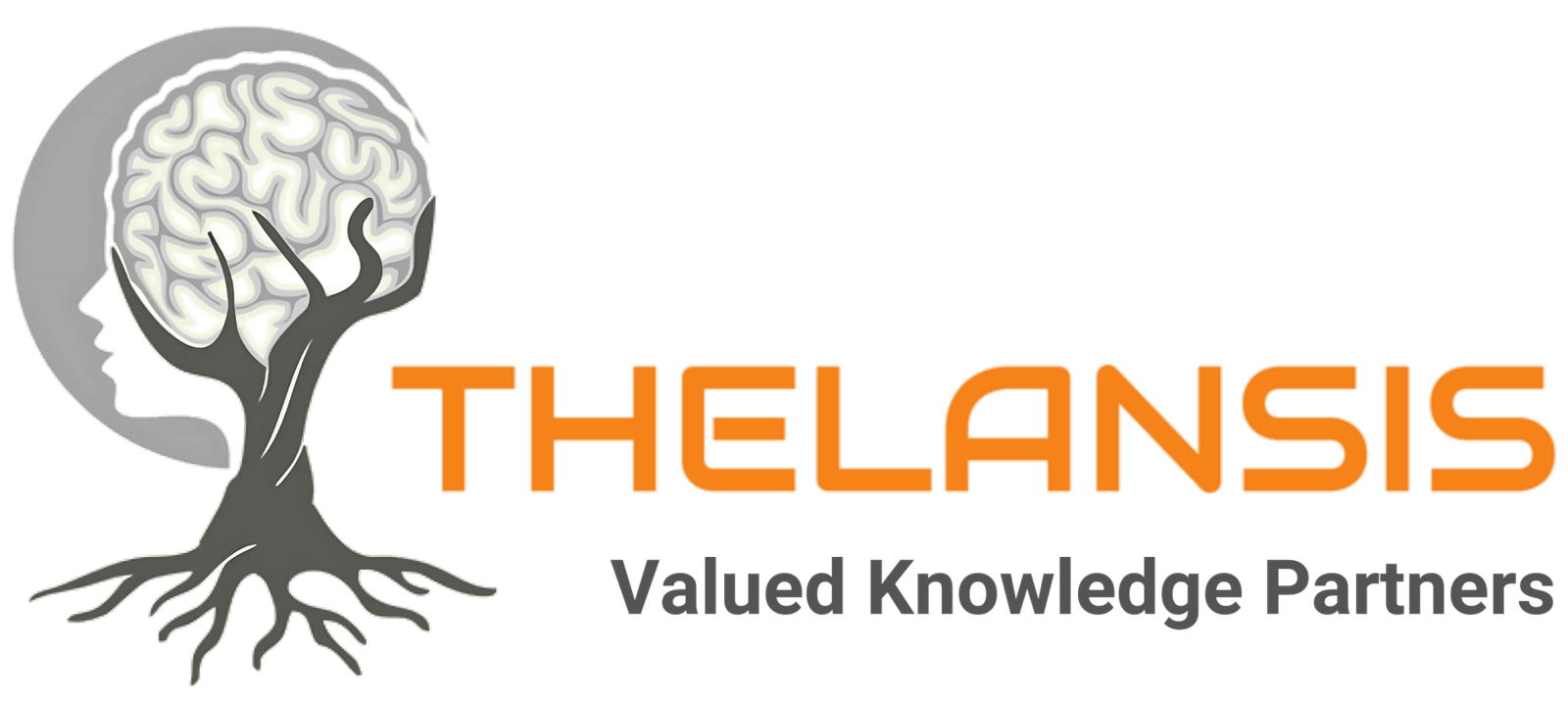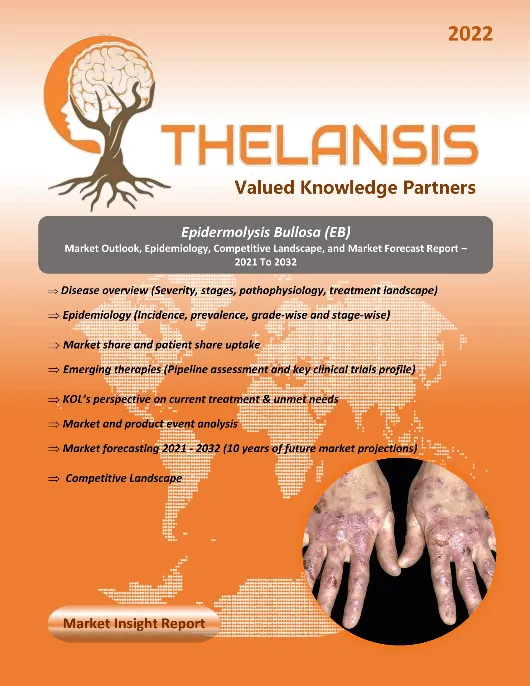Follicular Lymphoma (FL) – Current Treatment Insights Report – 2025
- Published Date : February 6, 2025
- Updated On : September 10, 2025
- Pages : 56
Follicular Lymphoma (FL) Current Treatment Insights
Thelansis’s “Follicular Lymphoma (FL) Current Treatment Insights Report – 2025″ describes the current treatment and management in Follicular Lymphoma. The analysis includes various current approved and off-label therapies, their respective doses, durations, efficacy, and safety benchmarks. The use of treatments by a line of therapy, including their KOL-perceived advantages and disadvantages, is studied. In addition, an in-depth assessment of patient characteristics, diagnosis, comorbidities and their treatment, treatment switch, polypharmacy, compliance, and persistence is conducted.
Follicular Lymphoma (FL) Overview
Follicular lymphoma, accounting for approximately 20–30% of all non-Hodgkin lymphomas, is the most common subtype of indolent (low-grade) B-cell lymphoma. It arises from germinal center B cells and is typically identified histologically by neoplastic follicles that disrupt normal lymph node architecture, with tumor cells arranged in circular or clustered patterns. The underlying cause remains unknown, and there is no evidence implicating infectious agents, making the disease non-contagious. More than 90% of cases express CD20, a surface antigen that enables targeted treatment with anti-CD20 monoclonal antibodies such as rituximab. Prognosis and risk assessment are guided by the FLIPI2 (Follicular Lymphoma International Prognostic Index 2), which incorporates clinical parameters including elevated beta-2 microglobulin, bone marrow involvement, hemoglobin levels below 12 g/dL, lymph node diameter exceeding 6 cm, and age over 60. Based on these factors, five-year progression-free survival rates vary significantly: low-risk patients (0 factors) have an 80% survival rate, intermediate-risk (1–2 factors) around 51%, and high-risk (3–5 factors) only 19%. Treatment decisions depend on disease stage, symptom burden, and risk profile, ranging from watchful waiting in asymptomatic cases to immunochemotherapy or targeted agents in advanced disease.
Geography coverage:
G8 (United States, EU5 [France, Germany, Italy, Spain, U.K.], Japan, and China)
Insights driven by surveys* with physician specialty(ies) involved in the diagnosis and treatment of patients:
- Survey findings are corroborated and enriched by insights from interviews with leading KOLs
*Survey is customized based on client requirements
Deliverables format:
- PowerPoint presentation
*As per Thelansis’s policy, we ensure that we include all the recent updates before releasing the report content and market model.
Key business questions answered:
- Patient characteristics/patient segments
- Patient diagnosis criteria
- Patient shares for current therapies
- Line of therapy analysis
- Treatment sequencing
- Patient journey
- Compliance and persistency analysis
- Polypharmacy
- Factors impacting physician choice of treatments
- Drivers and barriers to prescribing key brands/treatments
- Physician-perceived advantages and disadvantages of current therapies
- Evolving treatment landscape
- KOL quotes
Follicular Lymphoma (FL) Current Treatment Insights
Thelansis’s “Follicular Lymphoma (FL) Current Treatment Insights Report – 2025″ describes the current treatment and management in Follicular Lymphoma. The analysis includes various current approved and off-label therapies, their respective doses, durations, efficacy, and safety benchmarks. The use of treatments by a line of therapy, including their KOL-perceived advantages and disadvantages, is studied. In addition, an in-depth assessment of patient characteristics, diagnosis, comorbidities and their treatment, treatment switch, polypharmacy, compliance, and persistence is conducted.
Follicular Lymphoma (FL) Overview
Follicular lymphoma, accounting for approximately 20–30% of all non-Hodgkin lymphomas, is the most common subtype of indolent (low-grade) B-cell lymphoma. It arises from germinal center B cells and is typically identified histologically by neoplastic follicles that disrupt normal lymph node architecture, with tumor cells arranged in circular or clustered patterns. The underlying cause remains unknown, and there is no evidence implicating infectious agents, making the disease non-contagious. More than 90% of cases express CD20, a surface antigen that enables targeted treatment with anti-CD20 monoclonal antibodies such as rituximab. Prognosis and risk assessment are guided by the FLIPI2 (Follicular Lymphoma International Prognostic Index 2), which incorporates clinical parameters including elevated beta-2 microglobulin, bone marrow involvement, hemoglobin levels below 12 g/dL, lymph node diameter exceeding 6 cm, and age over 60. Based on these factors, five-year progression-free survival rates vary significantly: low-risk patients (0 factors) have an 80% survival rate, intermediate-risk (1–2 factors) around 51%, and high-risk (3–5 factors) only 19%. Treatment decisions depend on disease stage, symptom burden, and risk profile, ranging from watchful waiting in asymptomatic cases to immunochemotherapy or targeted agents in advanced disease.
Geography coverage:
G8 (United States, EU5 [France, Germany, Italy, Spain, U.K.], Japan, and China)
Insights driven by surveys* with physician specialty(ies) involved in the diagnosis and treatment of patients:
- Survey findings are corroborated and enriched by insights from interviews with leading KOLs
*Survey is customized based on client requirements
Deliverables format:
- PowerPoint presentation
*As per Thelansis’s policy, we ensure that we include all the recent updates before releasing the report content and market model.
Key business questions answered:
- Patient characteristics/patient segments
- Patient diagnosis criteria
- Patient shares for current therapies
- Line of therapy analysis
- Treatment sequencing
- Patient journey
- Compliance and persistency analysis
- Polypharmacy
- Factors impacting physician choice of treatments
- Drivers and barriers to prescribing key brands/treatments
- Physician-perceived advantages and disadvantages of current therapies
- Evolving treatment landscape
- KOL quotes
1. Key Findings and Analyst Commentary
- Key trends: market snapshots, SWOT analysis, commercial benefits and risk,etc.
2. Disease Context
- Disease definition, classification, etiology and pathophysiology, drug targets,etc.
3. Epidemiology
- Key takeaways
- Incidence / Prevalence
- Diagnosed and Drug-Treated populations
- Comorbidities
- Other relevant patient segments
4. Market Size and Forecast
- Key takeaways
- Market drivers and constraints
- Drug-class specific trends
- Country-specific trends
5. Competitive Landscape
- Current therapies
- Key takeaways
- Dx and Tx journey/algorithm
- Key current therapies – profiles and KOL insights
- Emerging therapies
- Key takeaways
- Notable late-phase emerging therapies – profiles, launch expectations, KOL insights
- Notable early-phase pipeline
6. Unmet Need and TPP Analysis
- Top unmet needs and future attainment by emerging therapies
- TPP analysis and KOL expectations
7. Regulatory and Reimbursement Environments (by country and payer insights)
8. Appendix (e.g., bibliography, methodology)
Table of contents (TOC)
1. Key Findings and Analyst Commentary
- Key trends: market snapshots, SWOT analysis, commercial benefits and risk,etc.
2. Disease Context
- Disease definition, classification, etiology and pathophysiology, drug targets,etc.
3. Epidemiology
- Key takeaways
- Incidence / Prevalence
- Diagnosed and Drug-Treated populations
- Comorbidities
- Other relevant patient segments
4. Market Size and Forecast
- Key takeaways
- Market drivers and constraints
- Drug-class specific trends
- Country-specific trends
5. Competitive Landscape
- Current therapies
- Key takeaways
- Dx and Tx journey/algorithm
- Key current therapies – profiles and KOL insights
- Emerging therapies
- Key takeaways
- Notable late-phase emerging therapies – profiles, launch expectations, KOL insights
- Notable early-phase pipeline
6. Unmet Need and TPP Analysis
- Top unmet needs and future attainment by emerging therapies
- TPP analysis and KOL expectations
7. Regulatory and Reimbursement Environments (by country and payer insights)
8. Appendix (e.g., bibliography, methodology)


